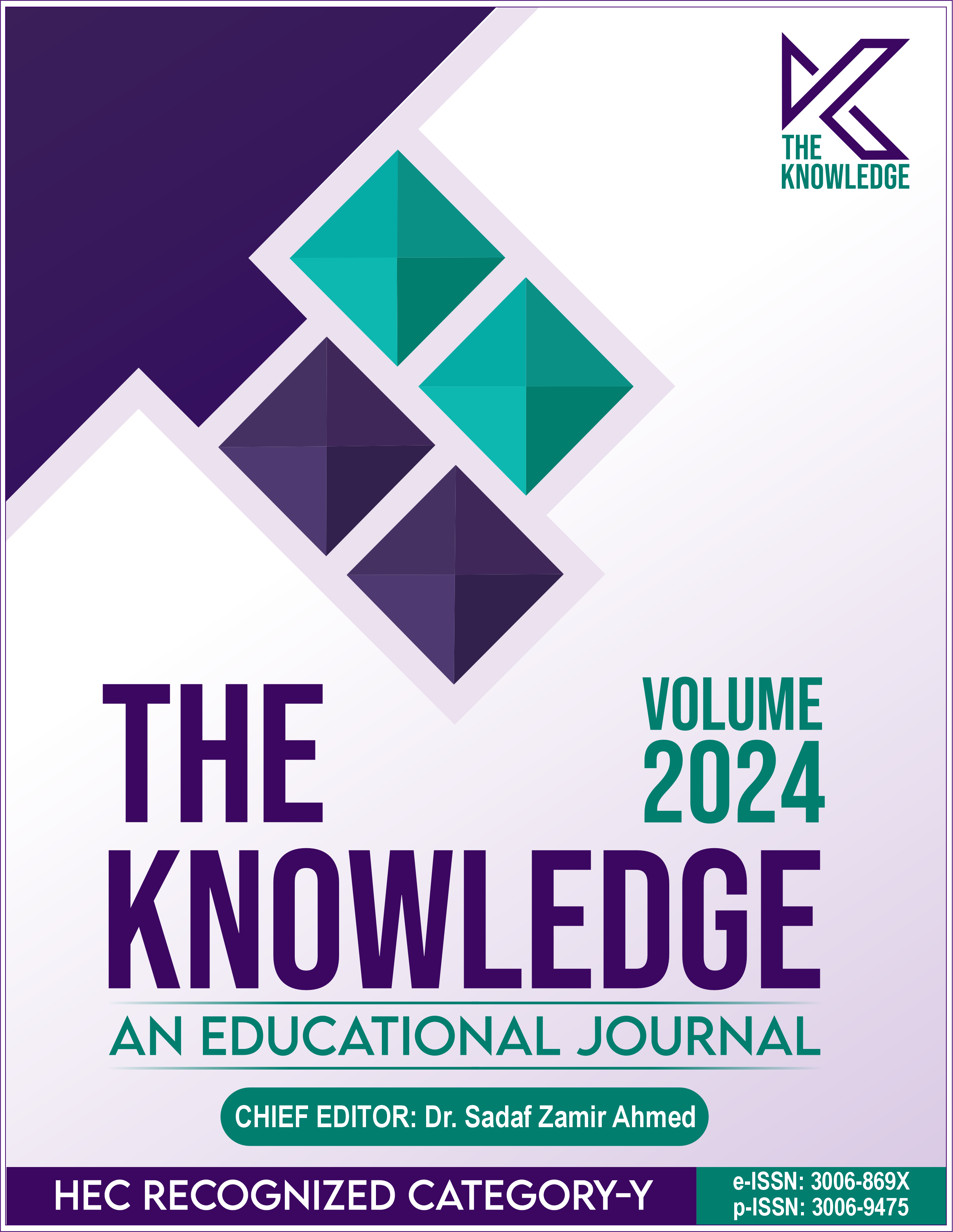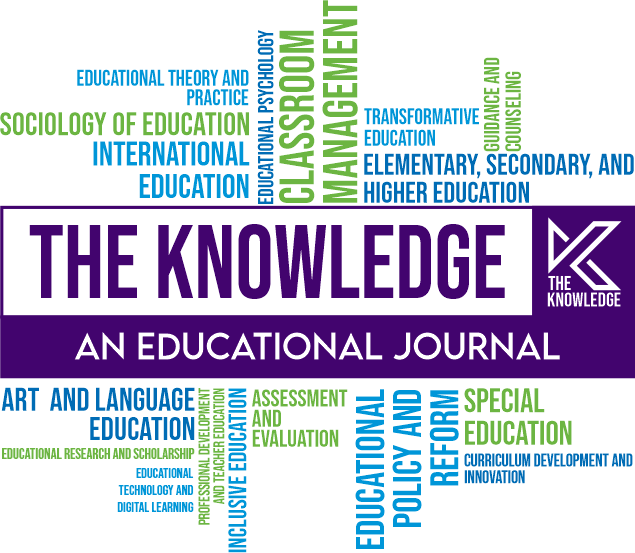Student Perception of Gender Equality: A Comparison by Gender Subject and Locality
DOI:
https://doi.org/10.63062/tk/2k24a.31041Keywords:
Gender Equality, Subject, Locality, Higher EducationAbstract
The study aimed to identify students’ perception of gender equality Punjab. The objectives of the study were to assess how students perceive gender equality in different aspects, such as education, employment opportunities, social roles, and rights, to analyze whether there are significant differences in perceptions of gender equality based on the students’ gender, to compare the students’ perception about gender equality in term of subject and to compare the students’ perception about gender equality in term of locality. This study adopted a descriptive research design. Student’s selected by using a random sampling technique to ensure representativeness and minimize bias. The sample consisted of students selected from private universities in Lahore, department of education and psychology totaling 100 participants and 100 students from university of the Punjab, department of education and psychology. The research instrument, a self-developed questionnaire for students, was drafted. The researcher herself visited the universities for the collection of data. To assess reliability, Cronbach's Alpha for the self-developed questionnaire calculated, resulting in a highly reliable value of .834.The findings revealed significant gender differences, with female students demonstrating stronger support for gender equality than their male counterparts do. The study also showed that locality influences gender perceptions, with urban students displaying a greater understanding of and support for gender equality compared to rural students, likely due to urban exposure to more progressive ideals and diverse social norms. It is recommended that promoting gender equality in educational settings require multifaceted approaches that address both individual and contextual factors.
References
Alsina, C., Giuliano, P., & Nunn, N. (2013). On the origins of gender roles: Women and the plough. Quarterly Journal of Economics, 128(2), 469–530. https://doi.org/10.1093/qje/qjt005
Alston, M. (2021). Gender and disasters. In Routledge handbook of feminist peace research (pp. 343-353). Routledge.
Anderson, L. W. (2010). A taxonomy for learning, teaching, and assessing: A revision of Bloom’s taxonomy of educational objectives. Pearson Education.
Anthias, F. (2013). Intersectional what? Social divisions, intersectionality and levels of analysis. Ethnicities, 13(1), 3–19. https://doi.org/10.1177/1468796812463547
Ayalon, H. (2003). Women and men go to university: Mathematical background and gender differences in choice of field in higher education. Sex Roles, 48(5–6), 277–290. https://doi.org/10.1023/A:1022821128754
Blickenstaff, J. C. (2005). Women and science careers: Leaky pipeline or gender filter? Gender and Education, 17(4), 369–386. https://doi.org/10.1080/09540250500145072
Crenshaw, K. (1991). Mapping the margins: Intersectionality, identity politics, and violence against women of color. Stanford Law Review, 43(6), 1241–1299. https://doi.org/10.2307/1229039
Domina, T. (2005). Leveling the home advantage: Assessing the effectiveness of parental involvement in elementary school. Sociology of Education, 78(3), 233–249. https://doi.org/10.1177/003804070507800303
Flood, M. (2007). Involving men in gender policy and practice. Critical Half: Bi-Annual Journal of Women for Women International, 5(1), 9-13.
Francis, B., & Skelton, C. (2005). Reassessing gender and achievement: Questioning contemporary key debates. Routledge.
Frawley, T., & Smith, C. (2018). Gendered discourses in education: A review of gender equality in teaching practice. Gender and Education, 30(6), 763–777. https://doi.org/10.1080/09540253.2018.1489307
Hooghe, M., & Stolle, D. (2004). Good girls go to the polling booth; bad boys go everywhere: Gender differences in anticipated political participation among American fourteen-year-olds. Women & Politics, 26(3–4), 1–23. https://doi.org/10.1300/J014v26n03_01
Inglehart, R., & Norris, P. (2003). Rising tide: Gender equality and cultural change around the world. Cambridge University Press.
Kane, J. M., & Mertz, J. E. (2021). Debunking myths about gender and mathematics performance. Notices of the American Mathematical Society, 68(1), 40–47. https://doi.org/10.1090/noti2195
Mukherjee, M., & Choudhury, S. (2020). Gender equality in education: A comparative study of urban and rural students in India. International Journal of Educational Development, 75, 102187. https://doi.org/10.1016/j.ijedudev.2020.102187
Reilly, L., & Neumann, D. L. (2022). Perceptions of inclusion and belonging in STEM disciplines: A gender perspective. Journal of STEM Education Research, 5(1), 15–32. https://doi.org/10.1007/s41979-021-00052-1
Sax, L. J., Lehman, K. J., Barthelemy, R. S., & Lim, G. (2017). Women in physics: A comparison to science, technology, engineering, and math education over four decades. Physics Review Physics Education Research, 13(2), 020108. https://doi.org/10.1103/PhysRevPhysEducRes.13.020108
Smith, M., Green, L., & Hinds, B. (2018). Gender and equality in educational settings: Student perspectives. British Journal of Educational Studies, 66(3), 367–384. https://doi.org/10.1080/00071005.2017.1417973
UNESCO. (2017). Cracking the code: Girls’ and women’s education in STEM. UNESCO Publishing.




